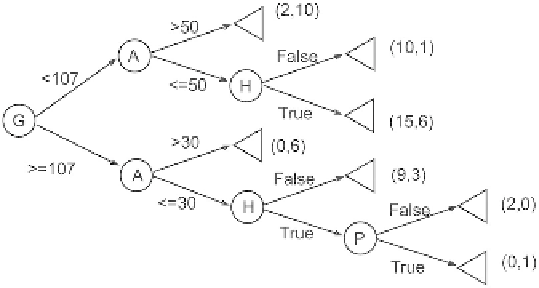Database Reference
In-Depth Information
Fig. 11.1
Illustration of oblivious decision tree.
recursive search for explaining attributes is terminated when there is no
attribute that explains the target with statistical significance.
11.2 Online Adaptive Decision Trees
A classification scheme called online adaptive decision trees (OADT) was
proposed by Basak (2004). As with the decision trees, OADT is a tree-
structured network which is capable of online learning like neural networks.
This leads to better generalization scores.
The fact that OADT can only handle two-class classification tasks
with a given structure is a major drawback. The ExOADT algorithm
[
Basak (2006)
]
can handle multiclass classification tasks and is able to
perform function approximation. ExOADT is structurally similar to OADT
extendedwitharegressionlayer.
11.3 Lazy Tree
In lazy tree algorithms learning is delayed until the query point is observed
[
Friedman
et al
. (1996)
]
.An
ad hoc
decision tree (actually a rule) is
constructed just to classify a certain instance. The LazyDT algorithm
constructs the best decision tree for each test instance. In practice, only
a path needs to be constructed. A caching scheme makes the algorithm
run fast.
With the LazyDT algorithm, a single decision tree built from the
training set offers a compromise: the test at the root of each subtree is
chosen to be the best split on average. This “average” approach can lead to
many irrelevant splits for a given test instance, thus fragmenting the data








Search WWH ::

Custom Search